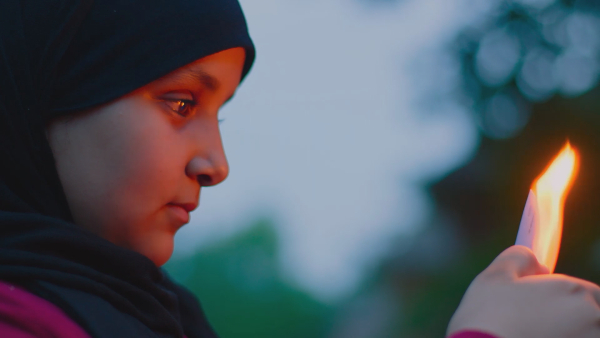After the shooting of Asian women in Atlanta, we rallied to express our deep disgust at the uptick in anti-Asian hate crimes—yet we didn’t similarly rally for the Brown, South Asians killed in Indianapolis.

In the aftermath of the recent shooting at a FedEx facility in Indianapolis and news of increased anti-Asian sentiment and hate crimes, I, and others like me, started to think deeply about our positions relative to the term “Asian.” When the shooting of Asian women in Atlanta happened a few weeks prior, we rallied to express our deep concern and disgust at the uptick in anti-Asian hate crimes, especially during the COVID-19 pandemic. Yet we didn’t similarly rally to support the instances of Anti-Asian hate pre-COVID-19 and certainly not for Brown, South Asians. This begs the question: Who is Asian enough to be Asian?
The term “Asian” doesn’t exist in other parts of the world. Only when entering places like the United States, do people become racialized under the umbrella of “Asian.” In other parts of the world, we are known by our place of origin—as Thai, Indian, Chinese, Pakistani, Bangladesi and so forth. Anti-Asian sentiment in the United States has also long predated this moment, and yet still we find ourselves contextualizing anti-Asian racism about certain groups (read: East Asians) versus our entire community.
On Twitter for example, @chris_notcapn writes: “I’m confused, are South Asians not considered Asian? Please make it make sense”—to which @DocWhatever replies, “People in the USA seem to think only East Asians count.”
When describing the recent uptick in anti-Asian sentiment and hate crimes, we must remind ourselves of the broad and diverse group that encompasses “Asian.” We, South Asians, too, are Asian. The Sikh employees at FedEx who were the victims of a recent shooting, too, are Asian.
While it is critical to note that our community continues to have its own issues with anti-Blackness and colorism, South Asians have also been the victims of racist and xenophobic attitudes. As early as the 1800s, when South Asians began migrating to the United States as laborers, they faced legal discrimination and violence. Political activism parties such as the Gadar Party in San Francisco began calling for freedom and democracy, but it wasn’t until the passage of the Immigration and Nationality Act of 1965 that discriminatory immigration laws and quotas were changed for South Asians. Despite increased immigration, however, racist attitudes prevail, and we, like other Asian groups, must learn our histories (#ethnicstudies).
I am a South Asian American woman who grew up in the United States. My Asian-ness and Brown-ness have both been used against me. For example, I recall struggling through math and sciences classes from high school through college, but was often passed from class to class because of perceived quietness and obedience; an example of the model minority myth. In my mostly white high school in Oregon, the theatre director was only willing to cast me as a lead actor with no lines and my face covered as the Ghost of Christmas Yet to Come in Charles Dickens’ A Christmas Carol. My job was simply to point and look scary.
Anti-Asian sentiment has been happening long before COVID-19, and South Asians have been among the targets of hate crimes and racism. For context, we must look at September 11, 2001, and its aftermath. Though never a direct target of hate crimes, I was still privy to the increased surveillance, racism and xenophobia happening against my community. Deepa Iyer’s We Too Sing America pushed for hate crimes against South Asian communities to be deemed domestic terrorism. Yet, in 2021, there continues to be an erasure of this traumatic part of America’s recent history. Hasan Minhaj’s show Patriot Act, recently cancelled by Netflix, was named for the post-9/11 law that increased surveillance for Brown people.
I was living in Wisconsin when the shooting happened at a Gurudwara (Sikh temple) in Oak Creek in 2012. Our community also heard about the South Asian man shoved in front of a subway train in New York City. Additionally, the organization South Asians Leading Together (SAALT) has documented over 400 hate crimes against South Asians including Muslims, Hindus, Sikhs, Middle Eastern and Arab Americans since 2015. These incidents remind us that racism kills South Asians too.
In a 2017 article, I called for disaggregation of the term “Asian” due to its broad representation. Although we share stories of immigration and the challenges of the model minority myth, we experience points of separation with how closely we are associated with the term Asian. Groups who are more light-skinned, for example, are most closely identified with the term Asian while those of us with deeper, Brown tones fight to be recognized or acknowledged.
In this moment, we must turn to leaders, like Vice President Kamala Harris, who have a critical job to do to move us forward as a larger community together. As we fight to be seen and heard, South Asians, wonder, when will our racial reckoning be?
Up next:





